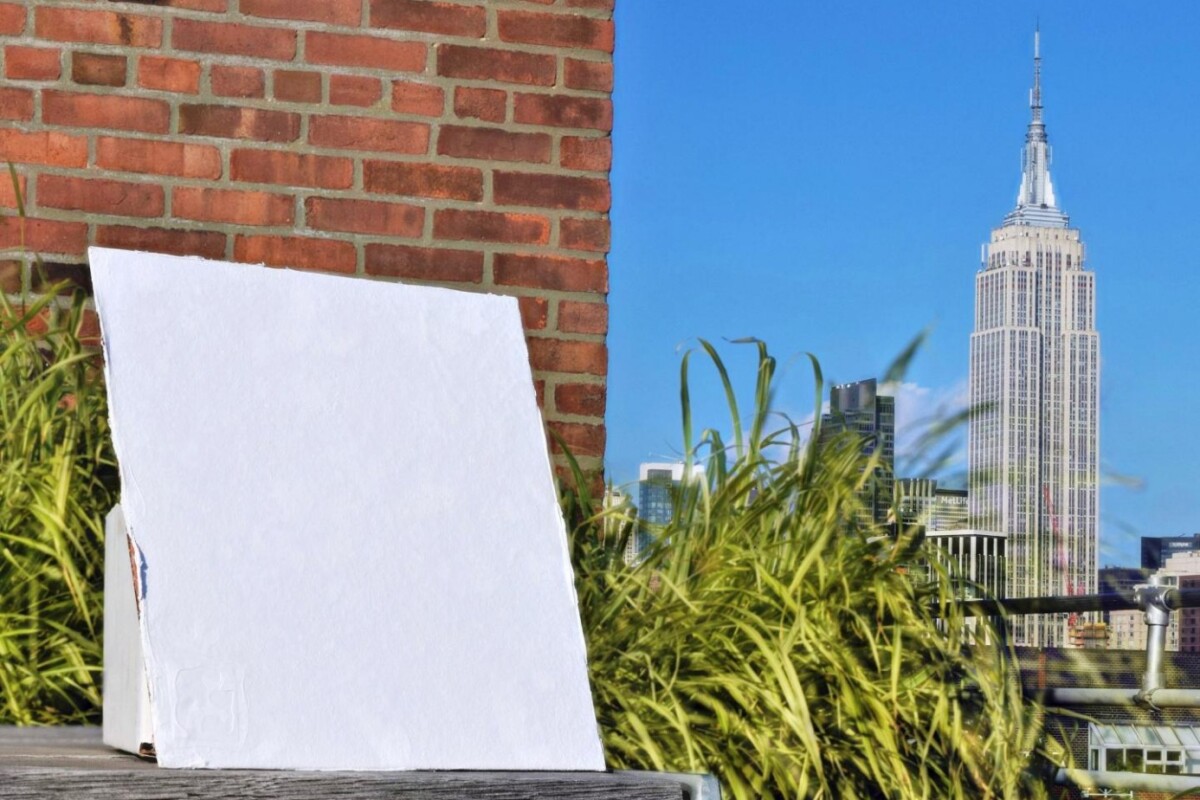In many parts of the world – particularly developing nations, where air conditioning isn't practical or affordable – people paint buildings' roofs white in order to reflect sunlight and thus keep those buildings cooler. It's an approach known as passive daytime radiative cooling, and a new paint-like polymer could make it more effective than ever.
The problem with conventional white paint is the fact that it typically contains pigments which absorb ultraviolet light, and that aren't very good at reflecting longer solar wavelengths. Developed by a team at Columbia University, the polymer doesn't contain such pigments. Instead, the porous material utilizes minuscule air pockets.
These are created via a process which begins with a clear solution consisting of the polymer, a solvent and water, which gets applied to a surface – that surface could be a roof, a building's outer walls, a water tank or anything else that needs to be kept cool. As the solvent evaporates, the water forms into tiny droplets within the polymer. Once the water in turn evaporates, what's left behind are a myriad of microscopic air voids (pictured below), which cause the polymer to appear bright white.

All wavelengths of sunlight are very effectively scattered and reflected by these voids, due to the difference in the refractive index between them and the surrounding polymer. In field tests, coatings of the polymer have been shown to reflect over 96 percent of incoming sunlight, minimizing solar heating. Additionally, the material exhibits a high thermal emittance, radiating about 97 percent of what heat there is into the sky.
As a result, a net heat loss can occur, with the coating actually staying cooler than the ambient outdoor temperature. It was a total of 6 ºC cooler when tested in the desert climate of Arizona, and 3 ºC cooler in the tropical climate of Bangladesh.
Should users not wish to "paint" everything white, colored dyes can be added to the polymer, which will still largely retain its reflective qualities. Additionally, although the scientists specifically utilized a poly(vinylidene fluoride-co-hexafluoropropylene) (P(VdF-HFP)HP) polymer, a wide variety of other polymers could be used to create the coating, allowing manufacturers to maximize factors such as eco-friendliness and biocompatibility.
"Now is a critical time to develop promising solutions for sustainable humanity," says lead scientist Yuan Yang. "This year, we witnessed heat waves and record-breaking temperatures in North America, Europe, Asia, and Australia. It is essential that we find solutions to this climate challenge, and we are very excited to be working on this new technology that addresses it."
The research – which also involves scientists Nanfang Yu and Jyotirmoy Mandal – is described in a paper that was recently published in the journal Science.
Source: Columbia University





